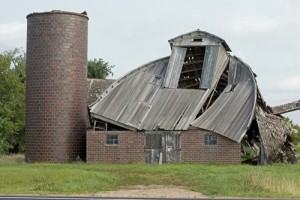 For years, property insurance policies that exclude rot damage have been called upon to cover rot because the policies extend coverage to “collapse”—an undefined term—caused by hidden decay, even if the structure remains standing and in use.
For years, property insurance policies that exclude rot damage have been called upon to cover rot because the policies extend coverage to “collapse”—an undefined term—caused by hidden decay, even if the structure remains standing and in use.
The Homeowners Association of the Queen Anne Park Condominium in Seattle discovered decay within the walls of its buildings in 2011. State Farm insured the Association with policies effective between 1992 and 1998. The policies excluded coverage for rot, but covered “collapse” caused by hidden decay. The Association argued that its buildings were in a state of collapse in or before 1998 and that State Farm covered the decay damage. State Farm denied the claim and the Association sued in federal court in Washington. The trial court granted summary judgment to State Farm and the Association appealed to the Ninth Circuit Court of Appeals.
Finding the meaning of “collapse” undefined in the policies and in Washington law, the Ninth Circuit certified the question of its meaning to the Washington Supreme Court. In Queen Anne Park Homeowners Ass’n v. State Farm Fire & Cas. Co., 183 Wn.2d 485, 352 P.3d 790 (2015), the Washington court held that “collapse” means a “substantial impairment of the structural integrity of a building or part of a building that renders such building or part of a building unfit for its function or unsafe.” The collapse must be “more than mere settling, cracking, shrinkage, bulging, or expansion.” 352 P.3d at 794. (See our Observer blog entry of June 23, 2015.)
With this definition in hand, the Ninth Circuit reviewed the summary judgment entered by the federal district court in favor of State Farm. It issued its decision, favorable to State Farm, on February 3, 2016. Queen Anne Park Homeowners Ass’n v. State Farm Fire & Cas. Co., No. 12-36021, 2016 WL 424736 (9th Cir. 2/3/2016).
The lower court had applied an “imminent danger” standard to evaluate “collapse,” not the “substantial impairment of structural integrity” test adopted by the Washington Supreme Court. On review, the Ninth Circuit held that the lower court’s use of a different definition made no difference under the facts before it because a denial of coverage was correct under either standard. The appellate court noted that the Association had presented no “evidence that would allow a reasonable jury to find that parts of its condominiums ‘collapsed’ over 17 years ago, given that the condominiums are still standing today.” Slip opinion at *4 (February 3, 2016). The court found it “simply implausible” that any walls of the buildings became “unfit for [their] function or unsafe” in or before 1998. The policies covered only “collapse” damage that occurred during the policies’ effective period. The insured could not assume substantial impairment to the buildings some thirteen years before discovery of actual decay damage in the walls. Therefore, the court affirmed the summary judgment in favor of State Farm that dismissed the Association’s claims. The court’s decision is a refreshing application of common sense to facts that frequently seem to become detached from reality.

